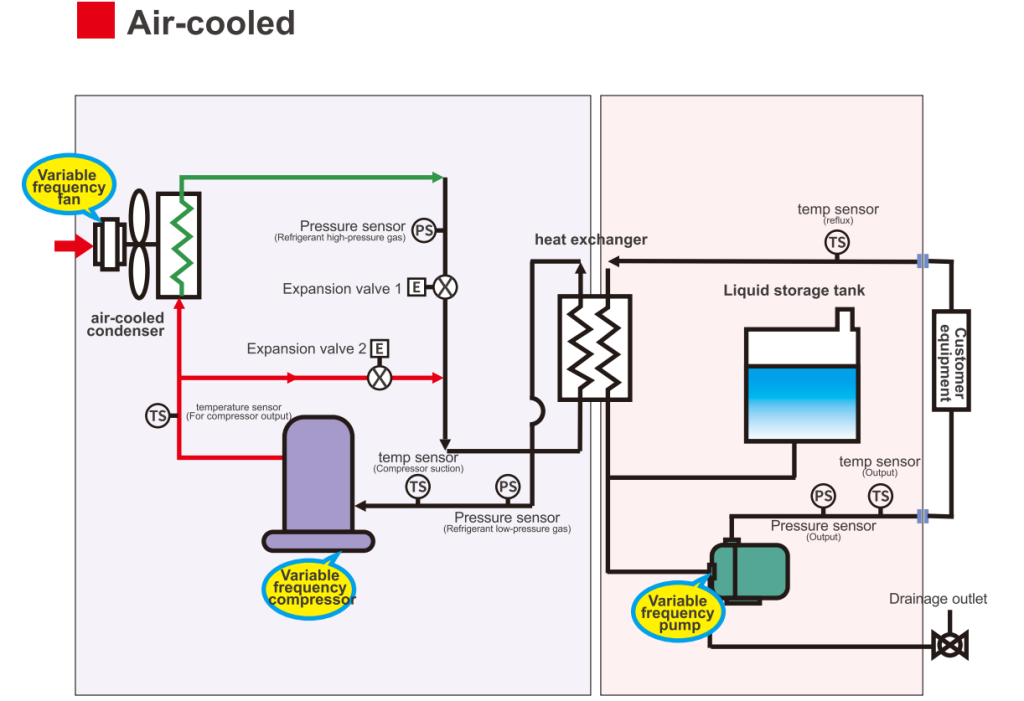What is an Air-Cooled Chiller

- Compression Chillers vs Absorption Chillers Key Differences Efficiency and Applications
- What Are the Common Types of Chiller Compressors
- Hidden Costs of Chillers Quotes
- Industrial Chiller vs Industrial Freezer
- What Are Water-Cooled Condensers
- Custom Chiller vs Standard Chiller
- Что такое чиллер с воздушным охлаждением
- Что такое чиллер с водяным охлаждением
- Август 2025
- Июль 2025
- Июнь 2025
- Май 2025
- Март 2025
- Февраль 2025
- Январь 2025
- Декабрь 2024
- Ноябрь 2024
- Октябрь 2024
- Сентябрь 2024
- Август 2024
- Июль 2024
- Июнь 2024
- Май 2024
- Апрель 2024
- Март 2024
- Февраль 2024
- Сентябрь 2023
- Июль 2023
- Июнь 2023
- Май 2023
- Январь 2023
чиллер с воздушным охлаждением чиллер Установка чиллеров чиллеры Морозильная камера охлаждающий чиллер охлаждающий нагревательный циркулятор система охлаждения отопления система охлаждения Реактор из двухслойного стекла система динамического контроля температуры морозильная камера газовый охладитель циркулятор отопления промышленный чиллер промышленное охлаждение промышленный морозильник промышленный холодильник реактор с рубашкой чиллер жидкостного охлаждения низкотемпературный охладитель новости фармацевтический охладитель технологический охладитель охладитель реактора охлаждение реактора охлаждение реактора нагрев охлаждение нагрев реактора реакторная система рефрижераторный циркулятор холодильный чиллер винтовой охладитель полупроводниковый охладитель охладитель для испытаний полупроводников сунди tcu контроль температуры испытательная камера термостат сверхнизкотемпературный охладитель охладитель для испытаний автомобилей охладитель воды чиллер с водяным охлаждением wtd
Chillers are typically divided into two categories based on how they handle condensation: air-cooled chillers and water-cooled chillers. In our earlier article Что такое чиллер с водяным охлаждением, we explained how those systems use cooling water to remove heat from the refrigerant. But what about air-cooled systems? How do they get the job done, and what are their advantages and limitations?
What is an Air-Cooled Chiller?
An air-cooled chiller is an industrial cooling system. The term “air-cooled” comes from the way it works—by relying on fans to blow air across the condenser to cool it down.
To make this easier to picture, think of how a household air conditioner works. The indoor unit (the evaporator) is where the refrigerant evaporates and absorbs heat, cooling the warm air inside the room.
The outdoor unit (the condenser) uses fan blades to draw in natural airflow and push it across the coils, helping release heat from the high-temperature refrigerant. Air-cooled chillers operate on the same principle, just on a larger industrial scale.


Benefits of Air-Cooled Chillers
Lower Initial Investment
Budgets often dictate equipment choices, and that’s where air-cooled systems stand out. Compared with water-cooled chillers, the initial investment is much lower. Why?
Because you don’t need complex piping or massive cooling towers—just fans at the condenser. For many small to medium-sized projects, this cost advantage makes air-cooled chillers a clear winner.
Simple Installation and Техническое обслуживание
With air-cooled chillers, there’s no need to worry about water quality or designing a complicated piping layout. You can install the unit anywhere with decent airflow. Maintenance is also straightforward and inexpensive.
Day-to-day care usually comes down to checking the fan blades and cleaning filters. Even without a specialized maintenance team, anyone with basic training can handle it.
No Water Limitations
Water-cooled chillers require reliable water sources with specific quality standards, which isn’t always practical. Air-cooled chillers, on the other hand, work entirely with air. That means no water costs, no water treatment concerns, and no worries about supply. This makes them an ideal solution in areas where water is scarce or where water quality isn’t dependable.


Limitations of Air-Cooled Chillers
Sensitive to Environmental Conditions
Compared with water-cooled chillers, air-cooled systems are much more affected by their surroundings. Because they rely on air to remove heat from the хладагент, high outdoor temperatures can reduce heat transfer efficiency.
The system has to work harder to maintain cooling performance, which increases energy consumption—and that shows up in higher electricity bills.
Noise Levels
Large fans are essential for moving air across the condenser coils, but they come with one drawback: noise. The constant hum and buzzing of fan operation can disrupt work or living environments. In settings where quiet operation is critical, like cleanrooms or laboratories, water-cooled chillers are often the preferred choice.
Space Requirements
At first glance, it’s easy to think water-cooled systems take up more room, since they need cooling towers and piping. But if you look at the chiller unit alone, air-cooled systems are actually bulkier. They require larger fans and coils to effectively cool the refrigerant, which makes the unit itself occupy more space.
On top of that, proper installation requires open, well-ventilated areas with enough clearance for heat to escape. If you’re considering placing a chiller in a basement, stairwell, or other confined space, a water-cooled unit might be a more practical fit.
Заключение
For small projects with limited budgets, air-cooled chillers strike a good balance between price and performance. If you’re planning a new project or thinking about upgrading an existing cooling system, LNEYA proudly offers a full range of air-cooled chillers as well as fully customized solutions.
Contact us today to learn how LNEYA can support your cooling needs.
Связанные охладители
СВЯЗАТЬСЯ С НАМИ
TEL:
EMAIL:
WeChat и WhatsApp:.

Wechat QR

Есть вопрос или нужна цитата? Заполните форму ниже, и наша команда свяжется с вами в течение 24 часов.
 LNEYA Промышленные чиллеры Производитель Поставщик
LNEYA Промышленные чиллеры Производитель Поставщик
















